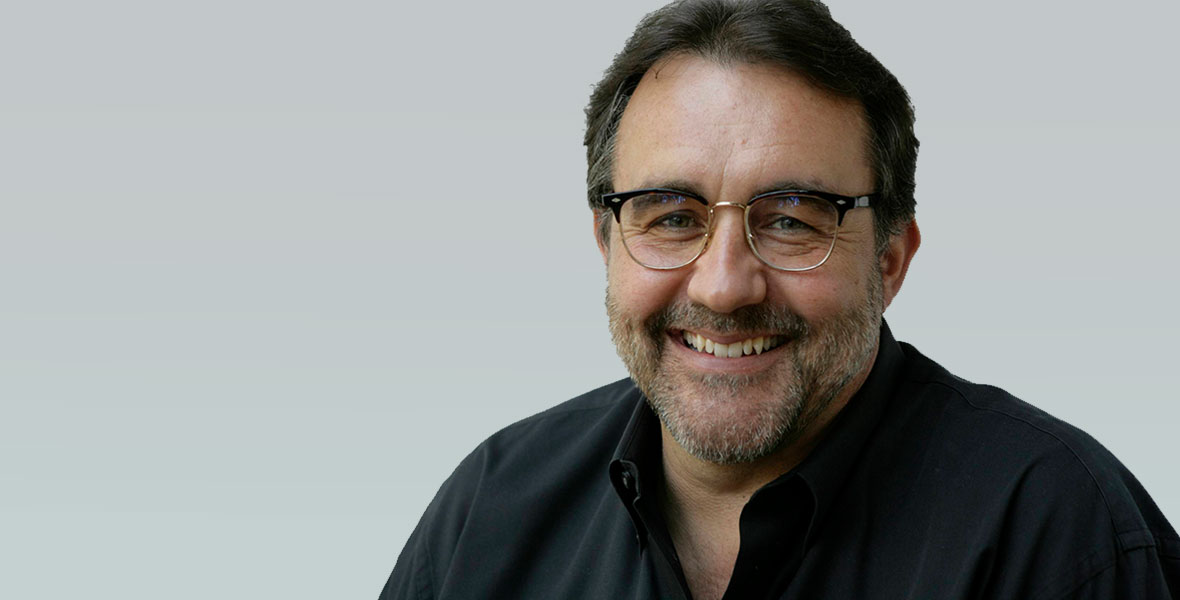Don Hahn has experienced the past, the present, and the future of The Walt Disney Company in a way very few others have.
Born in Chicago, Illinois, and raised in Southern California, Don developed an interest in both music and animation early on. “My favorite films were One Hundred and One Dalmatians and The Jungle Book,” he recalls. “When I was a kid, we went and saw those at the drive-in, in the Rambler station wagon. We put our pajamas on, my dad would back up the station wagon, the tailgate would come down, and we would watch The Jungle Book.” In high school, he was as a member of the Los Angeles Junior Philharmonic, and he eventually studied music and art at Cal State Northridge.
He considered a career as a music teacher, but the pull of animation was just too strong, and in 1976, he found his way onto The Walt DisneyStudios lot for a summer job delivering coffee and art to Disney animators. Several of Walt’s “Nine Old Men”—future Disney Legends such as Frank Thomas, Ollie Johnston, and Wolfgang “Woolie” Reitherman—were still at the Studios at the time and became Don’s mentors. “It just became my university,” he explains, “a place where I learned about art and music and painting and how hard it is and how great it is.”
Eventually, he took on his first animation assignment, serving as an inbetweener on Pete’s Dragon (1977)—followed by work as an assistant director or production manager on a host of other animated projects, including The Fox and the Hound (1981), Mickey’s Christmas Carol (1983), The Black Cauldron (1985), and The Great Mouse Detective (1986). Then came a move to London, where Don took on a slightly different role as associate producer on Who Framed Roger Rabbit (1988). Next, he produced the Roger Rabbit short Tummy Trouble (1989).
This shift would prove fortuitous; soon, Don was tasked with producing Disney’s 30th full- length animated feature, 1991’s Beauty and the Beast. Upon its release, the film was lauded by audiences and critics alike. Perhaps most notably, it was the very first animated film ever nominated for the Best Picture Oscar®. “It’s probably the most emotional, and fondly remembered, project in my life,” he says. “Working with people like Howard Ashman and Alan Menken, and the directors Kirk Wise and Gary Trousdale, makes you realize that there’s a big safety net at Disney of talented people—and if you don’t have an answer, they will.”
Don followed Beauty and the Beast with 1994’s Oscar-winning The Lion King, which became the most successful film in Disney history upon its release. He’d go on to produce films including The Hunchback of Notre Dame (1996) and Atlantis: The Lost Empire (2001). For Fantasia/2000(2000), he directed the host sequences featuring Disney Legends Angela Lansbury, Bette Midler, and James Earl Jones, among other stars. He also holds executive producer credits on The Emperor’s New Groove (2000) and Frankenweenie (2012), as well as on The Haunted Mansion (2003), Maleficent (2014), and the live-action reimagining of Beauty and the Beast (2017).
Don’s filmmaking eye soon shifted toward documentaries, and he made his directorial debut with Waking Sleeping Beauty (2010)—a fascinating and candid look at Disney’s 1980s and ’90s “animation renaissance.” Other documentary projects include Hand Held (2010) and the Annie Award-winning film Howard (2018), which chronicles the life of Disney Legend Howard Ashman. For Disneynature, Don has served as executive producer on Earth (2009), Oceans (2010), African Cats (2011), and Chimpanzee (2012), which he also co-wrote. He has also penned several books, including Dancing Corndogs in the Night (1999) and The Alchemy of Animation (2008).
With a career this vast and varied, it’s no wonder Don’s been honored with numerous accolades—including two Golden Globes®, a Golden Satellite Award, the Friz Award for Animation and Family Films, multiple Annie Awards (including the prestigious June Foray Award in 2016), and a Los Angeles-Area Emmy® Award.
The sheer breadth of memorable experiences he’s has had at the Company is not lost on him. “I’ve worked with a lot of really interesting people,” Don concedes. “It’s not a solo act, especially in animation—it’s a team sport. And boy, at its best, it’s a wonderful team sport, full of great people.”



